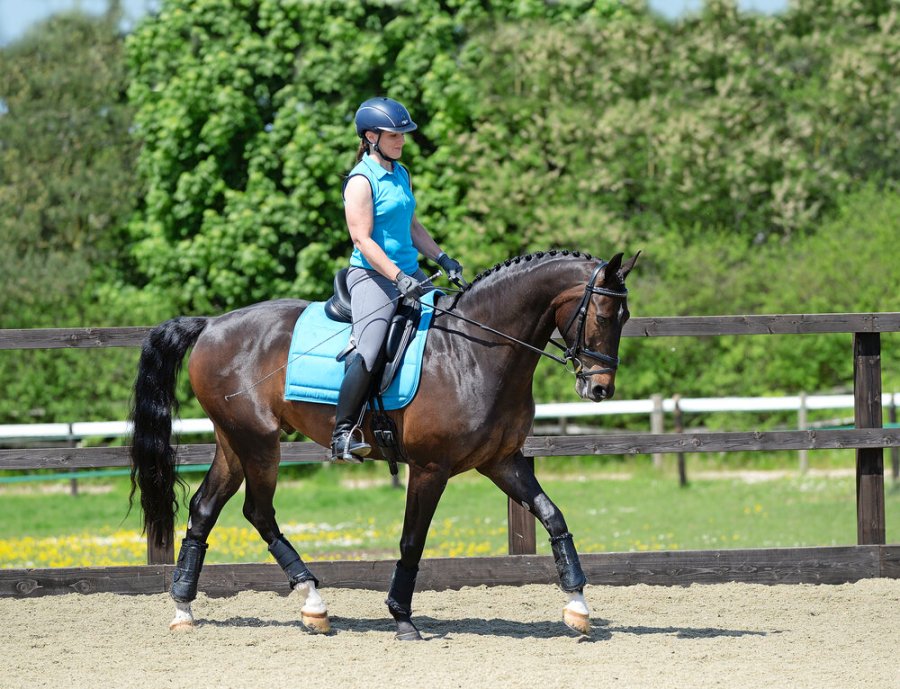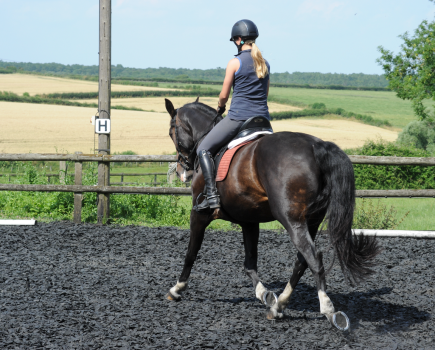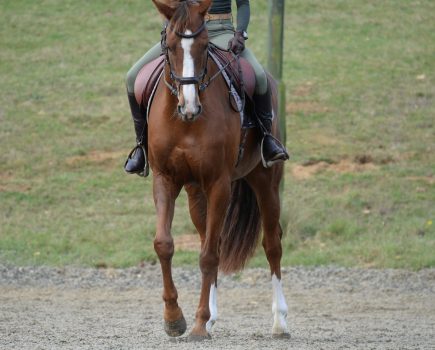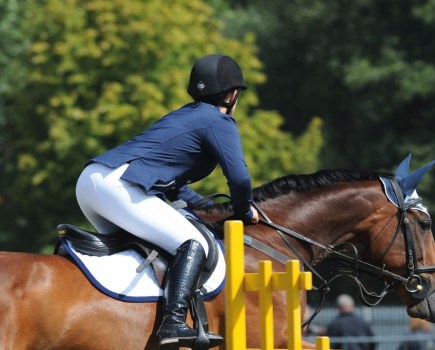Riding is a skill that takes years of practice and dedication to refine. There are no shortcuts and we don’t all have access to state-of-the-art simulators to monitor our technique. But there are simple approaches that can help every rider to assess and improve how they ride.
1. Check your straightness. One of the key skills riders need to perfect is sitting symmetrically in the saddle. Not only does sitting straight help your horse to develop straightness, but it’s crucial for reducing the risk of pain, injury and ill health in both horse and rider.
Persistent asymmetry will limit progress. It could be as simple as wearing fitted, striped clothing to help your instructor identify if you’re sitting straight, but ensure that the stripes are lying straight on you before getting on!
Check your horse’s back, tack and sweat marks when you remove the saddle — are they even? What about the wear on the heels of your regular riding boots — do you land more heavily or unevenly on one side? What about the grease marks on the inside calf of your boots when you dismount? Are you using your legs evenly?
2. Have yourself and your horse checked out by a physio and/or a chiropractor, preferably one who is also a rider.
They can give individual feedback about your particular areas of weakness or asymmetry and suggest exercises that will not only transform your riding, but will also improve your general health and wellbeing in other areas of your life.
3. Still images may not give an accurate assessment of your riding, so get someone to film you in the saddle from every angle, including from straight ahead and behind.
This is simple to do on any mobile phone. Wear light-coloured, well-fitting clothing (this is the time for white gloves) so that your movement patterns are easy for you and your instructor to spot. Keep a record of where you need to improve and how you are going to do it.
Write down your targets and then review them every few weeks. You don’t have to be a professional competitor to have goals.
4. Improve strength and suppleness OFF your horse. Many horse riders are active, outdoorsy people who don’t necessarily want to add gym membership to their list of monthly expenditures, but even a one-off personal training session will help to identify your strengths, weaknesses and imbalances.
Adding more movement patterns to your arsenal will make you more adaptable to your horse — and healthier, too.
On-horse training is necessary to develop your reaction time and your aids, but view off-horse training as the foundation that facilitates good riding.
5. Read up on the theory. If you want to ride well, you really DO need to know something about horse movement and biomechanics, such as the sequence of footfalls in each pace and how these relate to the timing and precision of your aids.
6. Get control of your body. Use strengthening and stretching exercises to even out natural asymmetry, and consider taking up an alternative sport or regime that complements riding, such as Pilates, swimming or yoga.
How can you give a precise and well-timed aid if you don’t have good balance and body control?
7. Consider whether the tack and equipment you’re using is really helping, is correctly adjusted and is suited to you individually.
It’s easy to get used to something and not realise that it’s actually a compromise which is holding you back.
Saddles are the obvious starting point and it’s essential that they fit you as well as your horse, but even the fit and comfort of boots and breeches can make a difference.
8. Ride different horses as often as you can and take any equine feedback with good grace. Our regular rides often adjust and compensate for our weaknesses, but a different horse may point out a few harsh but helpful truths!
9. Mobile apps can help with training and progress. From safe hacking features to learning dressage tests and tracking health, activity and progress, there are plenty out there that can help you to collect your data, refine your systems and increase your knowledge.
10. Remember that your psychological state plays a big part in how well you ride from day to day, so some basic sports psychology techniques may help you to keep control of any negative thoughts and prevent them from influencing your riding. While there is a lack of scientific information regarding the horse-human relationship, anecdotally there is plenty of evidence to suggest that the rider’s mood affects their horse, and many riders attribute greater consistency in performance to psychological help.
It has been suggested that a horse may ‘sense’ a rider’s emotional state through the rider’s tension or relaxation of posture in the saddle, contact down the reins and tone of voice.
Other studies demonstrate that perception of a horse’s temperament influences pre-competition nerves in the rider and affects performance, with self-confidence being an important ‘moderator’, supporting the relationship between rider psychology and equine performance.
It is widely recognised that it’s not just the athletic capability of the horse that determines success, but a good working partnership between a well-matched horse and rider. Assessments made by experienced trainers of horse-rider partnerships have shown that the most successful performances are both repeatable and consistent.
Controlling your mind really does help you to control your body, and it can therefore make a significant difference to your horse’s way of going.
Don’t miss the latest issue of Your Horse Magazine, jam-packed with training and veterinary advice, horse-care tips and the latest equestrian products, available now.









